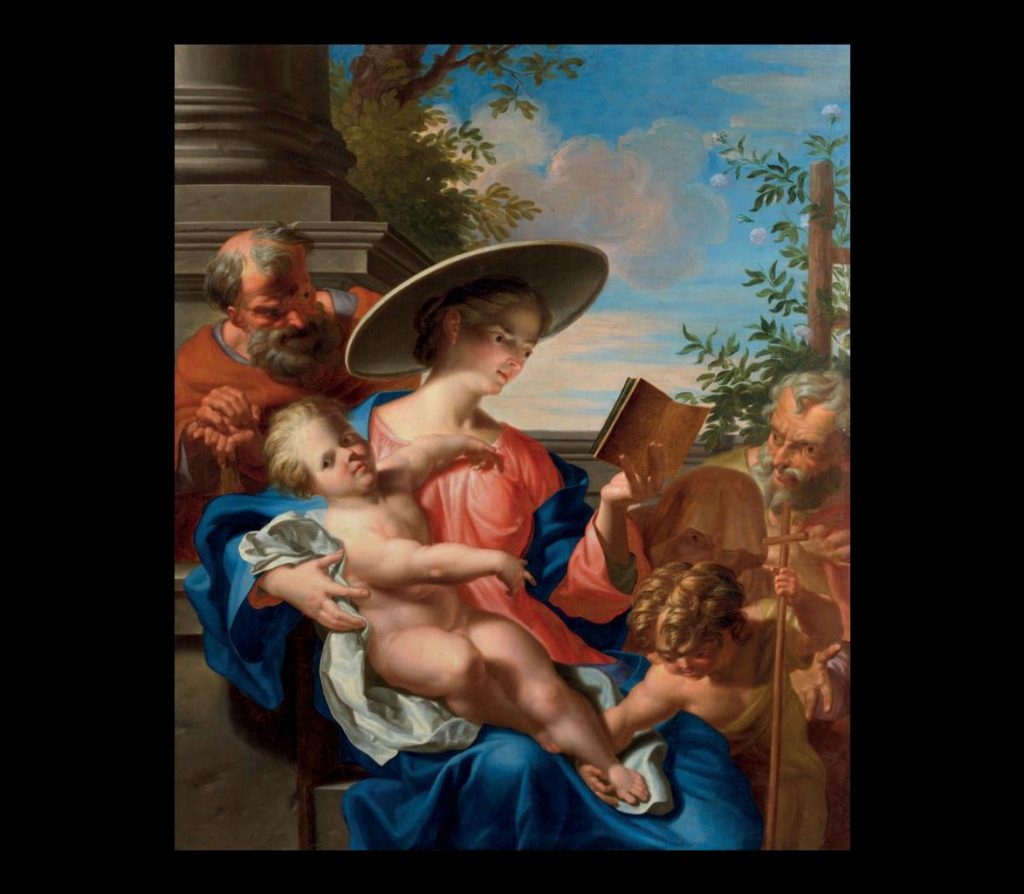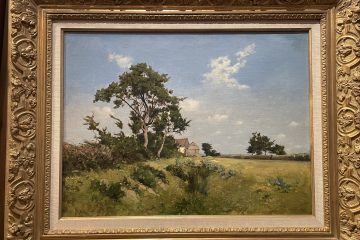
146.5 x 121 cm without frame
oil on canvas (lined)
Attributed to Abraham Godyn (ca. 1655 - ca. 1724)
From the Gospel according to Saint Matthew, Mary and Joseph flee to Egypt to escape the massacre of children under the age of two ordered by King Herod.
Mary, in the centre of the painting, holds the baby Jesus in her right arm while her left hand holds a book, which undoubtedly assures her of her son's posterity. Joseph dominates the scene, a shepherd with a stick in his hand creates symmetry. The left leg of the child Jesus is held by John the Baptist.
The serene, nimbed face of the Virgin, the centre of the painting, focuses the viewer's gaze. On the left, a column on its pedestal refers to the symbolism of ancient Rome. Joseph and the shepherd, looking down on the hand of Christ, symbolise the past, Jesus and John the Baptist, looking outwards, symbolise the future.
Antwerp-born Abraham Godyn lived in Italy, mainly in Rome, for nine years from 1680 to 1689, then moved to Prague where he stayed for eight years before returning to Antwerp. This was enough time to complete the frescoes in Troja Castle celebrating the victories of Leopold I over the Ottoman Empire. A masterpiece of the Baroque in Northern Europe, Godyn is a worthy representative of this European movement.
The "baroque civilisation" brings together half a dozen countries from Italy to Russia via Czechoslovakia: it is a flood of monuments, statues, paintings, in a word an incomparable art of living. The great Baroque adventure unfolded geographically with an incomparable exuberance of life and interpreters such as Bernini and Mozart who transcended their respective arts. Baroque Europe takes on different faces depending on the country, from the water games of Bavaria to the operas of Prague, it is a Europe of the celebration of the senses before death.
D.Fernandez, la perle et le croissant, l'Europe baroque de Naples à Saint Petersbourg, éd. Plon, 1995


